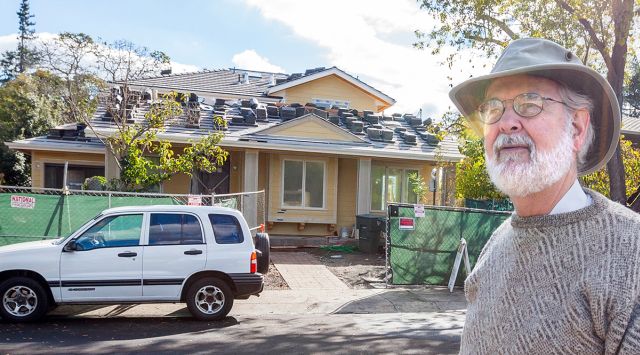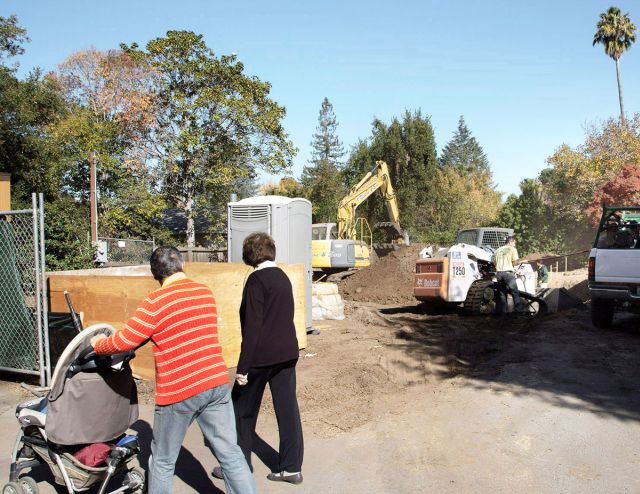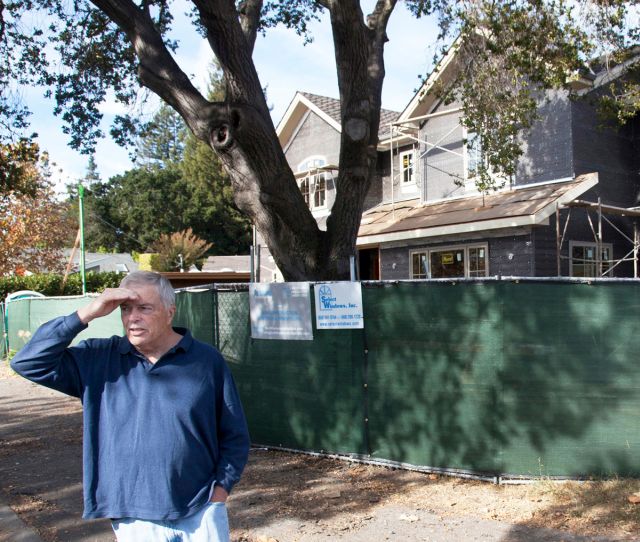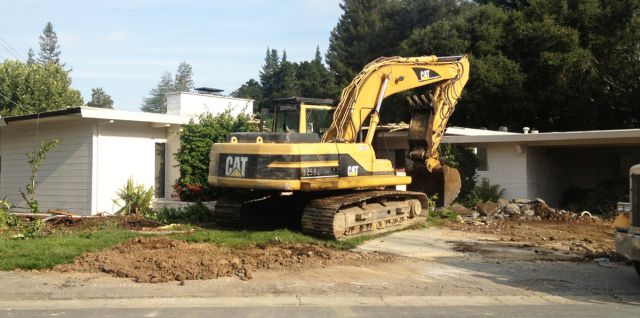
What’s Behind a Wave of Eichler Demolitions?
 |
|
|
For several years now, Eichler neighborhoods in Palo Alto and nearby Silicon Valley communities have been suffering from an ailment—teardown syndrome, you might call it. Stylish mid-century modern Eichlers are ripped down or massively remodeled to be replaced by homes that are out of character with the neighborhood due to scale and appearance.
‘Why Not Just Tear it Down?,’ which appears in the new, winter '16 issue of CA-Modern magazine, examines not just what is happening—but why. We also consider—what can be done about it?
As one anonymous Eichler resident noted in an online post, “The very things that made Palo Alto so appealing in the past—quaint neighborhoods, sense of community, block parties, etc.—are slowly going by the wayside in this relentless march towards these gaudy monstrosities. This conspicuous consumption will in the end destroy that which made Palo Alto so special.”
As Eichler homes are replaced with larger homes, neighborhoods not only lose their overall look. Neighbors lose privacy. Suddenly neighbors are peering into their backyards and their glasss-walled living rooms and bedrooms.
We talk to observers of the teardowns and to people in the real estate industry who follow the economics closely. These are also people who are attuned to what homeowners and homebuyers today want in a home—whether they are fans of modernism or just folks looking for a nice place to live.
 |
|
|
Consider the following incidents that have shaken up Palo Alto and some nearby towns:
An Eichler home directly across from the Eichler Swim and Tennis Club—gone.
An early, rambling and very woodsy Eichler in Atherton is destroyed—directly across from a similar Eichler that Joe Eichler himself once called home.
In nearby Menlo Park, fueled by “Silicon Valley types with stock options,” Eichler owner Phil Friedly says, homes are ripped down by spec builders to be replaced with homes that are up to three times as large.
Mackay homes too, built by a competitor of Joe Eichler using Eichler’s architects Anshen and Allen, also are menaced. One recent victim, in Santa Clara’s Maywood Estates neighborhood, is not a tear down but a second story addition that will change the character both of the once-modest modern home and of the neighborhood.
And, in one of the most egregious moves, an amazing house Anshen and Allen designed in 1957 as the family home for Elmer Gavello, another Eichler competitor who built modern tracts, was flattened to make way for an unimaginative McMansion. It had been an amazing building with a soaring star-shaped roof.
As homebuilder John Suppes observes, “People want bigger homes. If you look at the trend since the 1950s, homes get bigger every year.”
But is bigness always better? Do we live in a society that inevitably favors individual choice over neighborhood harmony?
And why has the teardown phenomenon threatened the Palo Alto area to the relative exclusion of other areas? Is the threat likely to spread?
 |
|
|
Is it all the fault of the techies? Of the one-percenters who can afford to pay $2 million for a home—just to tear it down and replace it?
Are Eichlers protected from some of the teardown pressure simply because they are so beautiful and desirable? Are Eichlers, indeed, being torn down less frequently than 1950s and 1960s standard ranch-style houses?
Can fans of Eichlers ensure their preservation through care for their homes? Through neighborhood cohesion?
Perhaps, some people say. And many are trying to preserve their neighborhoods.
In recent months, for example, several neighborhoods in Palo Alto have worked together and cooperated with city officials to establish single-story overlay zones. More of these zones seem to be in the works as, in a remarkable show of solidarity, people from Eichler neighborhoods throughout town have gotten together to strategize and help each other.
These single-story zones can protect against remodels that go up in height, and against replacement homes that are two stories tall.
 |
|
|
But they can’t protect against other changes that are out of character. With an overlay zone in place, an Eichler home can still be converted into a Tuscan villa.
That’s why some preservationists look instead at historic district designation. An Eichler neighborhood in Los Altos is taking that route—even though, to this point, bad remodels and teardowns have not been a significant issue there.
Sometimes, indeed, it pays to take action before a crisis hits.
Eichler Network has been reporting on the preservation of Eichler and other mid-century modern homes since our inception. We cover the issue in an objective manner. But like most of our readers, we love Eichler homes and we appreciate the value of an intact mid-century modern neighborhood.
We hope our article, ‘Why Not Just Tear it Down?,’ helps the people who live in these neighborhoods fight the teardown disease.
- ‹ previous
- 627 of 677
- next ›



